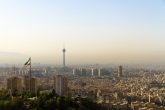June 14, 2017
How Trump’s Black and White World View Met Reality in the Middle East
It was only three weeks ago that President Donald Trump, in Riyadh, proclaimed that he had secured unprecedented unity amongst Sunni governments to fight the two scourges all the assembled 55 governments agreed were destabilizing the Middle East — Islamist extremism and Iran. That unity lasted mere days, however, as Saudi Arabia, Egypt, the UAE, and Bahrain cut off relations with Qatar and essentially imposed a blockade on the country, which imports 40 percent of its food across its land border with Saudi Arabia.
Read the full piece on Foreign Policy.
More from CNAS
-
“The Ayatollah Has No Clothes” – with Rich Goldberg and Richard Fontaine
Richard Fontaine is CEO of the Center for American Security, joins Call Me Back to assess the threat FROM Iran and the threat TO Iran. Listen to the full episode on Call Me ...
By Richard Fontaine
-
What Does Yahya Sinwar’s Death Mean for the War in Gaza?
Jonathan Lord, Senior Fellow and Director of the Middle East Security program, joins RN Drive to discuss the death of Sinwar who has long been viewed as one of the militant gr...
By Jonathan Lord
-
Russia in the Middle East with Jonathan Lord and Hanna Notte
One year after the October 7 attacks by Hamas, the crisis in the Middle East has grown more and more complex. With the region teetering on the brink of broader conflict, the B...
By Jonathan Lord, Hanna Notte, Andrea Kendall-Taylor & Jim Townsend
-
A Year of Anguish for the Hostages in Gaza—and Their Families
October 7 gave rise to unexpected bipartisan coalitions of D.C. experts and legislators who lent their knowledge to help U.S. hostage families and victims of the conflict navi...
By Daniel Silverberg




